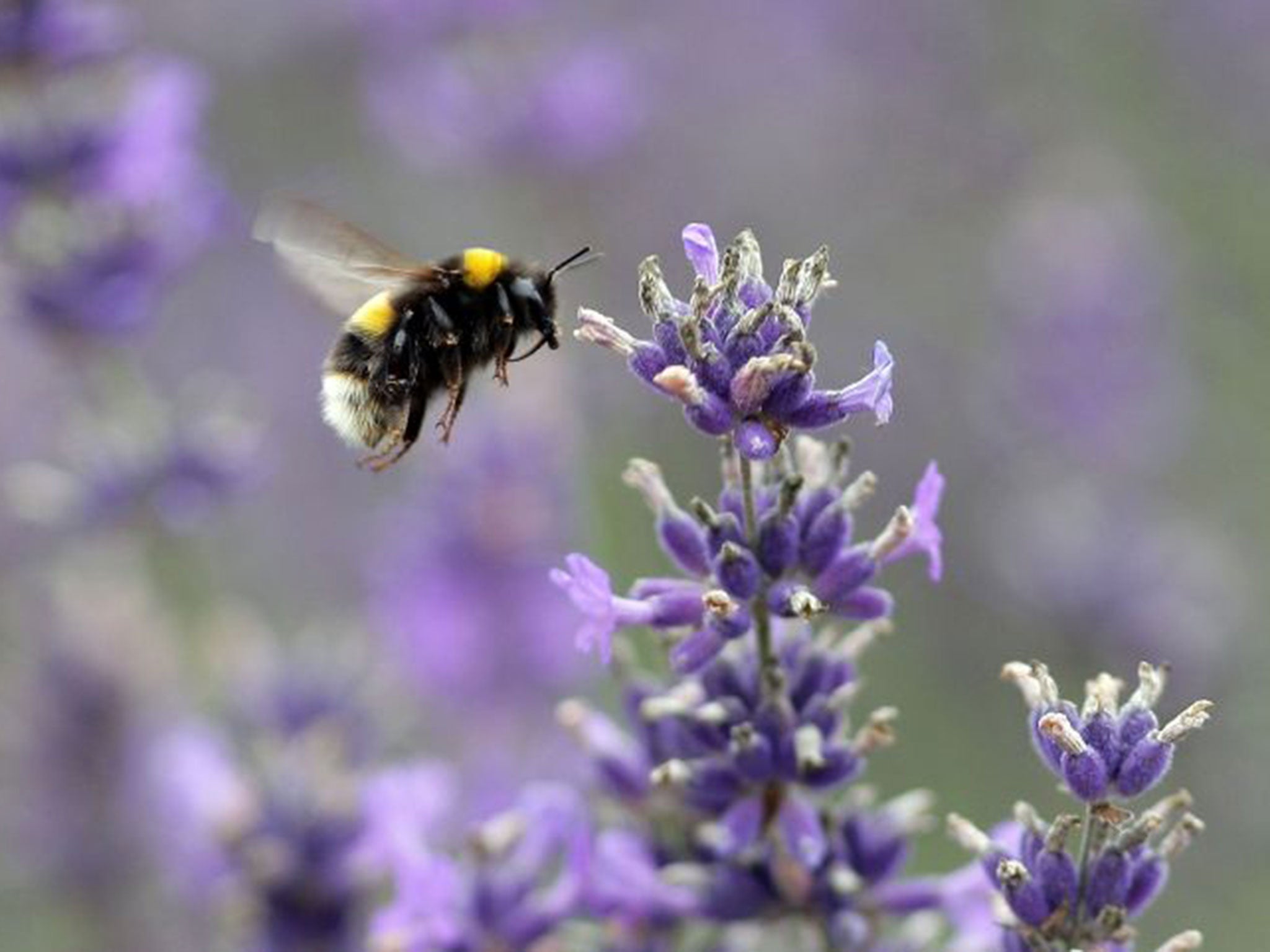Pesticides linked to mass bee deaths also affect other friendly organisms including birds and fish
Study's findings are in stark contrast to the UK Government’s stance on neonicotinoids

A class of pesticides linked to the decline of honeybees is also affecting a wide variety of other beneficial organisms such as earthworms and butterflies, according to a major study that directly contradicts the Government’s relaxed stance on the use of neonicotinoids.
A group of 29 scientists from four continents found unequivocal evidence from hundreds of published studies to claim that “neonics” – the most widely used pesticides in the world – are having a dramatic impact on the ecosystems that support food production and wildlife.
The independent researchers, who are also advisers to the International Union for Conservation of Nature (IUCN), have concluded that the “systemic” pesticides such as the neonicotinoids pose as great a risk to the environment as the banned pesticide DDT, and other persistent organophosphates.
The findings of the Task Force on Systemic Pesticides, published today, are in stark contrast to the UK Government’s stance on neonicotinoids, which is that there is not enough evidence to ban their use or to support the EU’s proposed moratorium in Europe.
The taskforce, set up four years ago, analysed 800 peer-reviewed scientific reports on neonicotinoids and fibronil, another type of systemic pesticide, a group of pesticides that are absorbed by all parts of a plant, including roots, leaves, flowers, fruit and even nectar and pollen.
One of the lead authors of the report, Jean-Marc Bonmartin of the National Centre for Scientific Research in France, said that the published evidence of the link between neonics and damage to wildlife and the environment was now clear.
“We are witnessing a threat to the productivity of our natural and farmed environment equivalent to that posed by organophosphates and DDT,” Dr Bonmartin said.
“Far from protecting food production, the use of neonics is threatening the very infrastructure which enables it, imperilling the pollinators, habitat engineers and natural pest controllers at the heart of a functioning ecosystem,” he said.
The report, called the Worldwide Integrated Assessment, found that neonics posed a risk not just to honeybees but to a variety of other animals, such as soil-conditioning earthworms, aquatic invertebrates and even birds and fish.
Key findings from the assessment found that neonics accumulate in the soil and persist for months and in some cases for years. The breakdown products are often as toxic – or more toxic – than the pesticide’s active ingredients, which are designed to work as poisonous nerve agents.
“If you use them every year they accumulate, they get into the soil water and hence into streams. So essentially we are contaminating the global environment with highly toxic, highly persistent chemicals,” said David Goulson, professor of biology at Sussex University and one of the report’s authors.
“The focus to date has been on honeybees but it’s clear that the impacts of neonics are more profound than that. The story goes far beyond bees. It goes to all wildlife that lives on farmland,” Professor Goulson said.
Maarten Bijleveld van Lexmond, who chaired the research, said: “The findings of the [assessment] are gravely worrying. We can now clearly see that neonics and fibronil pose a risk to ecosystem functioning and services which go far beyond concerns about one species and which really must warrant government and regulatory attention.”
Contrary to Government assertions, the scientists found published evidence to suggest that relatively low levels of neonics, similar to concentrations found in the field, can affect bee navigation, learning, food collection, longevity, resistance to disease and fertility.
An assessment of neonics last year by the Department for the Environment, Food and Rural Affairs concluded that under normal circumstances there are no effects on bees, although it is not possible to rule out “rare effects”.
Defra scientists also found that laboratory-based studies showing sub-lethal effects on bees from neonics do not represent realistic exposure levels and conditions in the open air. “Consequently… the risk to bee populations from neonicotinoids, as they are currently used, is low,” they said.
Neonicotinoids: What's affected?
The study by the Task Force on Systemic Pesticides is a meta-analysis of about 800 published scientific papers on the “systemic” pesticides known as neonicotinoids and fibronil. This class of agro-chemicals are designed to permeate the entire crop plant, from roots to leaves and flowers, to ward off insect pests. However the task force has identified potential problems with a number of other animals:
Bees and other insect pollinators
Neonics are nerve poisons and can impair the sense of smell or memory that are essential for navigation in bees and other insect pollinators, such as butterflies.
Terrestrial invertebrates
Earthworms are critical for the health of soil yet they can also be affected by neonics, according to the study. Research shows that the pesticides can alter the tunnelling behaviour of earthworms.
Aquatic invertebrates
Neonics can be found in soil moisture and so can be washed into streams and rivers. The most affected group in the aquatic environment were freshwater snails and water fleas.
Subscribe to Independent Premium to bookmark this article
Want to bookmark your favourite articles and stories to read or reference later? Start your Independent Premium subscription today.

Join our commenting forum
Join thought-provoking conversations, follow other Independent readers and see their replies